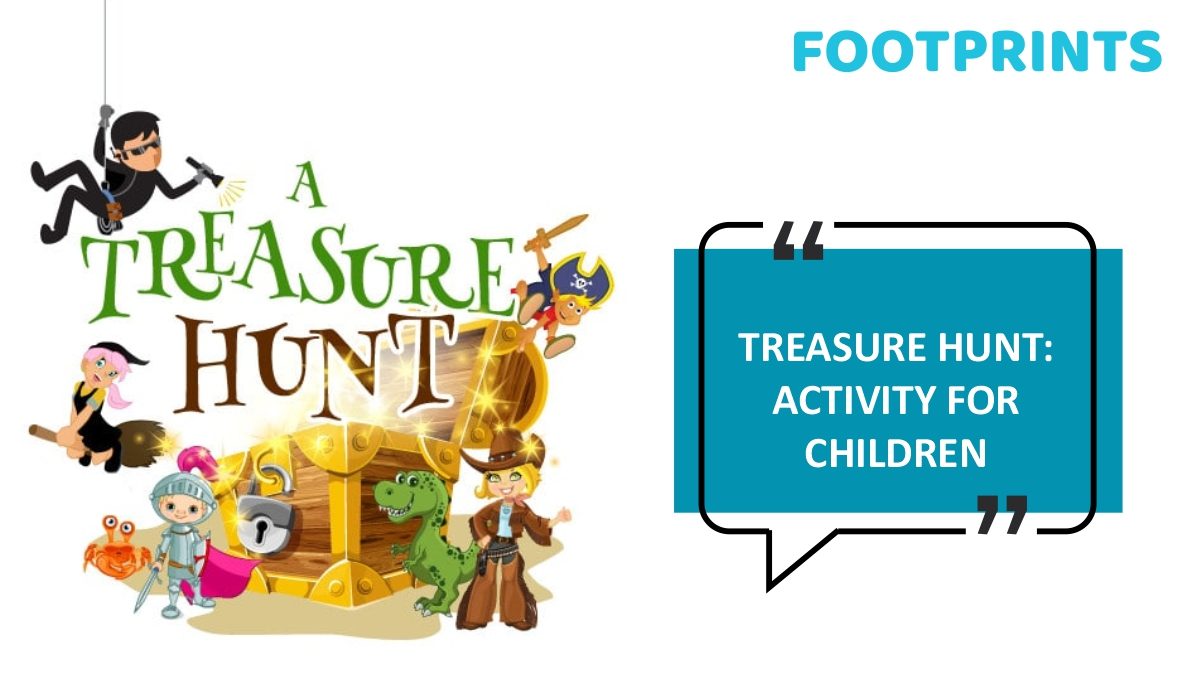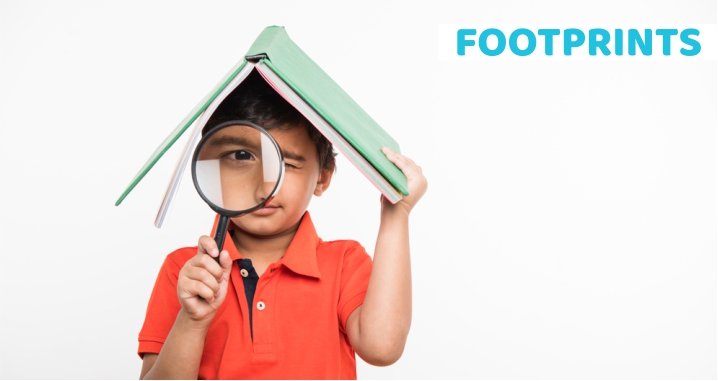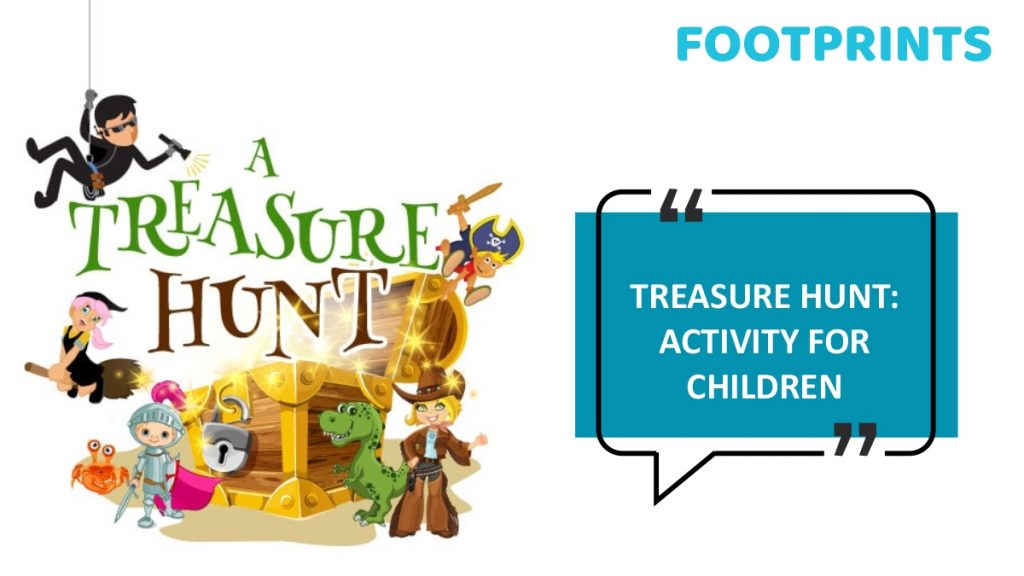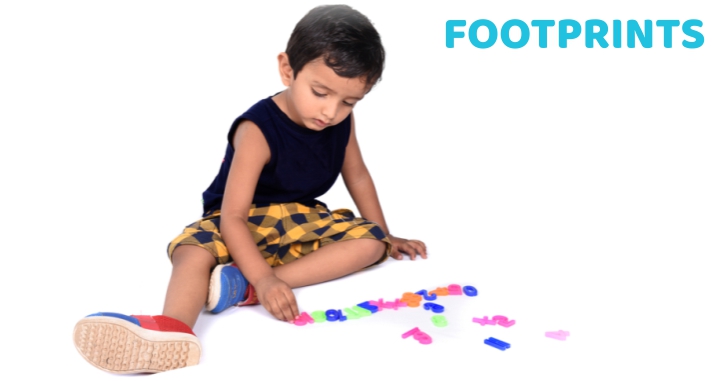
Children are naturally curious, and as parents, our imperative is to sustain this curiosity level and help it improve even through exploration. When exploration becomes an intrinsic part of them, they will likely remain learners for the rest of their lives.
Piquing a child’s curiosity can take several forms. An exciting way to do it is through a fun game called Treasure Hunt. A treasure hunt is a game or activity in which goods are concealed in a specific area for children to seek and discover. Typically, they are provided with a series of clues to aid them in this task. Treasure hunts are extremely adaptable activities. They can take place indoors or outdoors and help students learn about various subjects. Children’s treasure hunt clues can be used to assess and practice various academic abilities and knowledge.
How can Treasure Hunt be helpful?
The game encourages exploration and activity. An outdoor treasure hunt can keep the child active and allow them to spend time in touch with nature. However, if the weather or circumstances do not permit, you can even enjoy the game indoors.
Another important aspect of the game is that it helps the child exercise his critical thinking skills. Solving the clues adds to the child’s sense of satisfaction and confidence.
Another aspect that the game teaches the child is the importance of perseverance and that rewards can lie at the end of hard work!

What do you require for Treasure Hunt?
A Treasure Hunt activities can be done both indoors and outdoors. Some of the things that you will require include:
- Paper and pencil to prepare clues.
- Drawings as clues are a good idea for children between the ages of 3 and 6, while written clues can work very well for older children.
- A treasure that you need to hide. It will work well if the treasure is something that a child values, as that will add to the joy of discovering it. That does not mean, however, that it needs to be very expensive.
How to play Treasure Hunt?
Essentially, Treasure Hunt Activities works in that each clue you set up leads the child to the next clue. While progressively moving from one clue to another, the child will reach the last clue and will be led to the treasure. What you can do to set up the game is to work backward. That will mean first deciding where you will hide the treasure and, from there, working backward to the different clues. For instance, if you are playing the game in a park, you may decide that the treasure will be found near the swing. You can start by directing the child to a park bench where he will see the first clue. The bench, for instance, may have a clue that leads the child to a mango tree, which in turn leads him to the fountain, the slide, and so on. Essentially, pictures of each place will keep leading the child from one place to the other until he discovers the treasure. The sheer joy on the child’s face on finally finding the treasure will be to die for. Be prepared for repeated requests to play the game!
Pro tip: At the end of each game, remember to praise the child for a job well done! The child’s tenacity not to give up before he finds the treasure needs to be particularly applauded. It is small coachable moments such as these that teach the child much-needed life skills.
Moreover, the game can intentionally be arranged as harder, although you must ensure the level is age-appropriate. If you wish, you can also modify the game to ensure the child’s interest is sustained. For instance, at the outset, you may give the child pictures of things they need to collect from the park- twigs, flowers, leaves, pebbles, and more. If you wish, you can also set up a time when they need to undertake the collection. A timer can ring, bringing the game to a halt. Once the task is done, you can discuss the objects they have collected and concepts like shapes, opposites, and more. This way, it can be ensured that the child does not consider learning concepts a chore. For children who are learning to read, it will be a good idea to give them written clues by way of Treasure Hunt questions that get them to read without once again looking at reading as a tedious task.
To Sum Up
You are only limited by your imagination when it comes to Treasure Hunt ideas, as well as using the game of Treasure Hunt Activities to drive home essential concepts. The game can be convenient, whether it is teaching them life skills such as perseverance or critical thinking or academic skills such as reading, opposites, shapes, and more. That it will give you a lot of bonding time together is an added perk!
At Footprints, a leading Preschool chain, we use play as an effective pedagogical medium. Besides teaching children’s pre-academic skills, we intensely focus on teaching them age-appropriate life skills. We follow the scientifically developed HighScope curriculum, which has active learning at its core. It allows young children to gain knowledge through natural play and interactions with the environment, events, and other people.
Above all, we want to ensure we raise curious learners who can remain learners for life.
Aditya brings over ten years of expertise as a Senior Marketing Strategist. He’s an expert at developing captivating marketing tactics that regularly provide excellent outcomes. His innovative strategies have demonstrated a track record of increasing organizational reach and engagement, showcasing his extensive knowledge of the contemporary marketing landscape.



